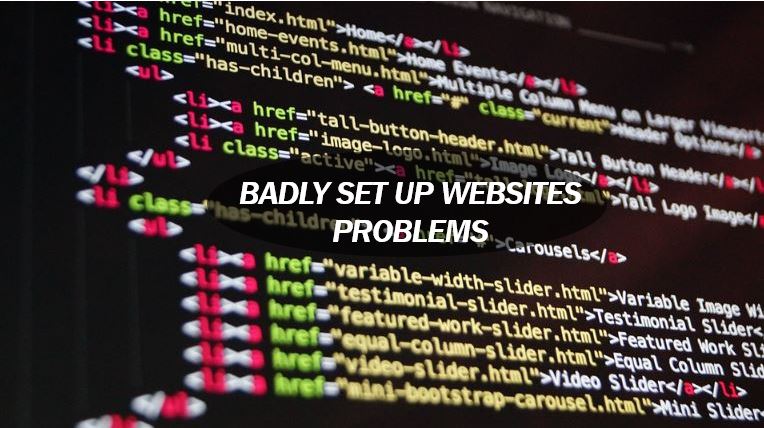
Creating a webpage might seem daunting, especially for beginners. Without the right approach, your website might fall short in attracting the conversion rates and revenue you’re aiming for. Businesses often make small yet crucial mistakes that hinder their website’s profitability and ability to attract new customers.
In this article, we’ll delve into these common mistakes and provide strategies to avoid them, setting you on the path to outperform competitors and foster company growth. By addressing the issues we outline below, you’ll notice a significant improvement in your website’s traffic and conversion rates.
Addressing Slow Loading Webpages:
A webpage that takes more than four seconds to load is generally considered slow, leading to potential customers leaving out of impatience. Google has recently stated that a well-optimized webpage should load in three seconds or less to maintain visitor interest. Shockingly, up to 70% of webpages take seven seconds or more to load, resulting in frustrated visitors.
But that’s not all. Slow loading times can also negatively impact your Google search rankings, as highlighted in PWD’s article “Our Tips & Tricks for Google Ranking Factors”. Poor rankings mean your website is less likely to be seen, as most people don’t venture past the first or second page of search results. Ensuring your webpage loads within three seconds is crucial for visitor retention and visibility on search engines.
Remember, a slow server can also contribute to slow loading times, indicating a deeper issue that needs resolving. Unfortunately as many as half of webpages take over 5 seconds or longer to load.
Simplifying Fonts:
The right font can leave a lasting impression on potential customers and play a crucial role in converting them. However, some fonts, particularly cursive or handwritten styles, can be difficult to read, affecting cognitive fluency, or a visitor’s ease in processing written information.
When selecting a font, consider its readability, not just its aesthetic appeal. Seek opinions from friends and family, and put yourself in a first-time visitor’s shoes to ensure clarity. A website that is hard to read is likely to drive visitors away.
Consistency is key—stick to one font across your website. Multiple fonts can create visual confusion, detracting from your message and potentially sending visitors to your competitors.
Targeting Your Content:
Creating website content solely focused on promoting your business’s excellence is a common pitfall. Instead, center your content on how your products or services can solve your customers’ problems and improve their lives.
Ensure your content is scannable, as visitors often skim through, reading only about 28% of the text. Utilize short paragraphs, clear subheadings, bullet points, and lists to enhance readability. Avoid cluttering the webpage; ample white space helps prevent visual confusion, guiding visitors through your content with ease.
Mobile Optimization:
Ensure your website is fully optimized for mobile devices. With an increasing number of users accessing websites via smartphones and tablets, a mobile-friendly design is crucial. This ensures a seamless browsing experience, regardless of the device being used.
User-Friendly Navigation:
Make sure your website’s navigation is intuitive and straightforward. Users should be able to find what they’re looking for with ease. Include a clear menu, a search function, and a sitemap to help users and search engines navigate your site efficiently.
High-Quality Content:
Invest in creating high-quality, relevant content that provides value to your visitors. Well-written, informative articles can establish your brand as an authority in your field, build trust with your audience, and improve your search engine rankings.
Use Engaging Visuals:
Incorporate appealing visuals like images, videos, and infographics to break up text and add interest to your pages. Ensure that any media used is optimized for quick loading and is relevant to the content.
Implement Clear Calls-to-Action:
Guide your visitors on what to do next with clear and compelling calls-to-action (CTAs). Whether it’s signing up for a newsletter, downloading a resource, or making a purchase, your CTAs should be noticeable and enticing.
Improve Website Security:
A secure website protects your business and your users’ data. Ensure that you have an SSL certificate installed, keep your website platform and any plugins up to date, and regularly back up your site.
Optimize for Search Engines:
Invest time in search engine optimization (SEO) to improve your website’s visibility on search engines. This includes optimizing your content, improving your site’s loading speed, obtaining quality backlinks, and ensuring your website is mobile-friendly.
Gather and Analyze User Feedback:
Collect feedback from your users and analyze it to understand their needs and preferences better. This can help identify areas for improvement and ensure your website meets your audience’s expectations.
Regularly Update Content:
Keep your content fresh and up to date. Regular updates signal to search engines that your site is current, which can contribute to higher rankings.
Monitor Website Performance:
Use tools like Google Analytics to monitor your website’s performance. Track metrics such as visitor numbers, bounce rates, and conversion rates to understand how users interact with your site and identify areas for improvement.
By implementing these strategies, you can significantly enhance the user experience on your website, leading to higher engagement, improved conversion rates, and ultimately, the success of your online presence.

